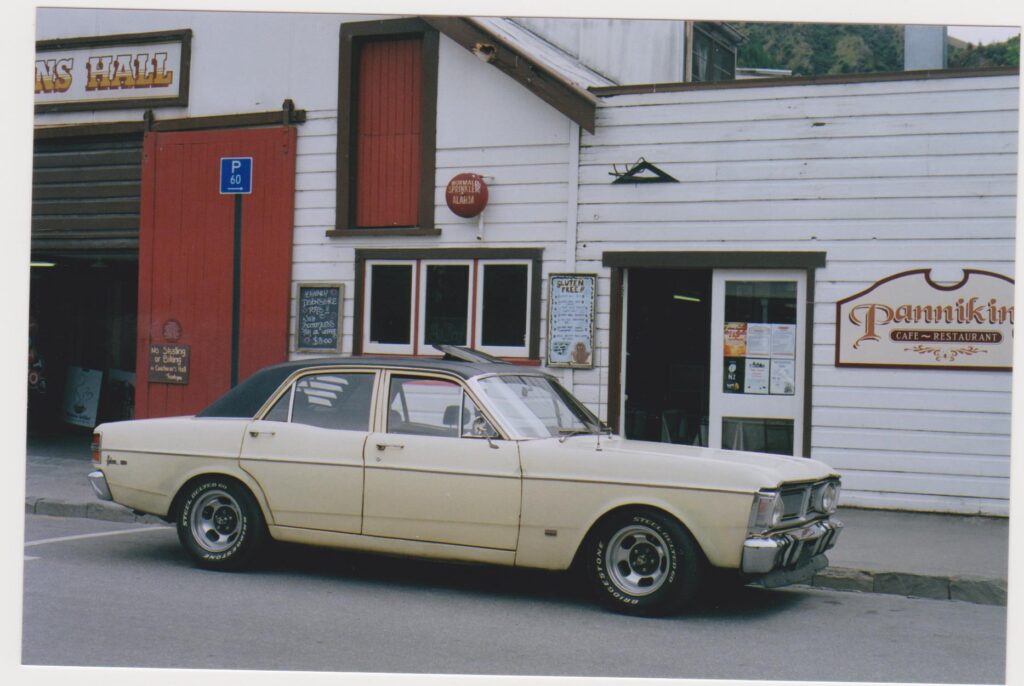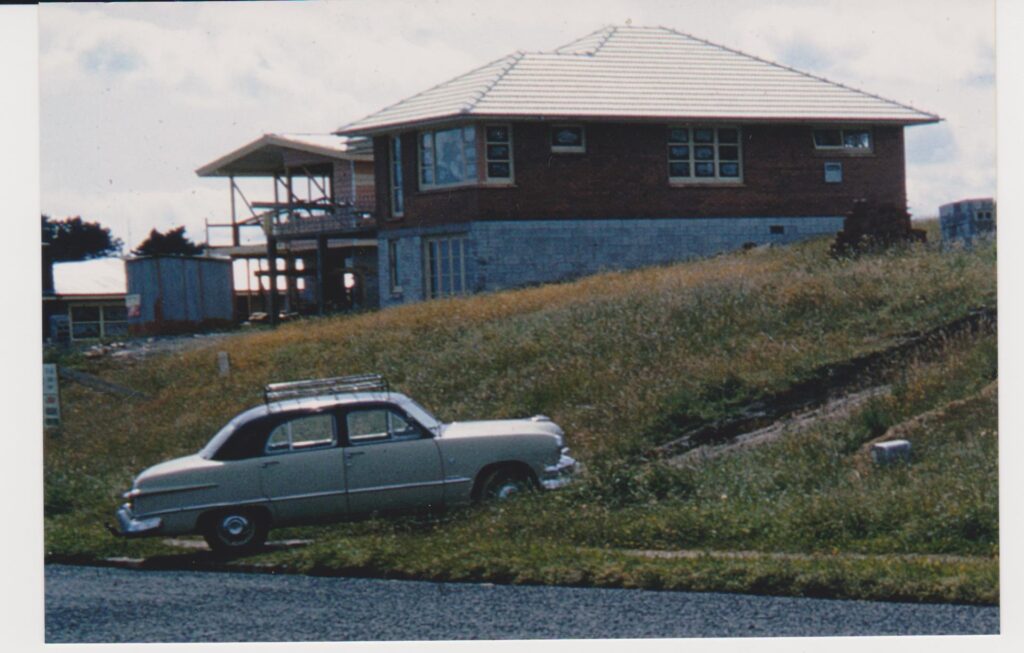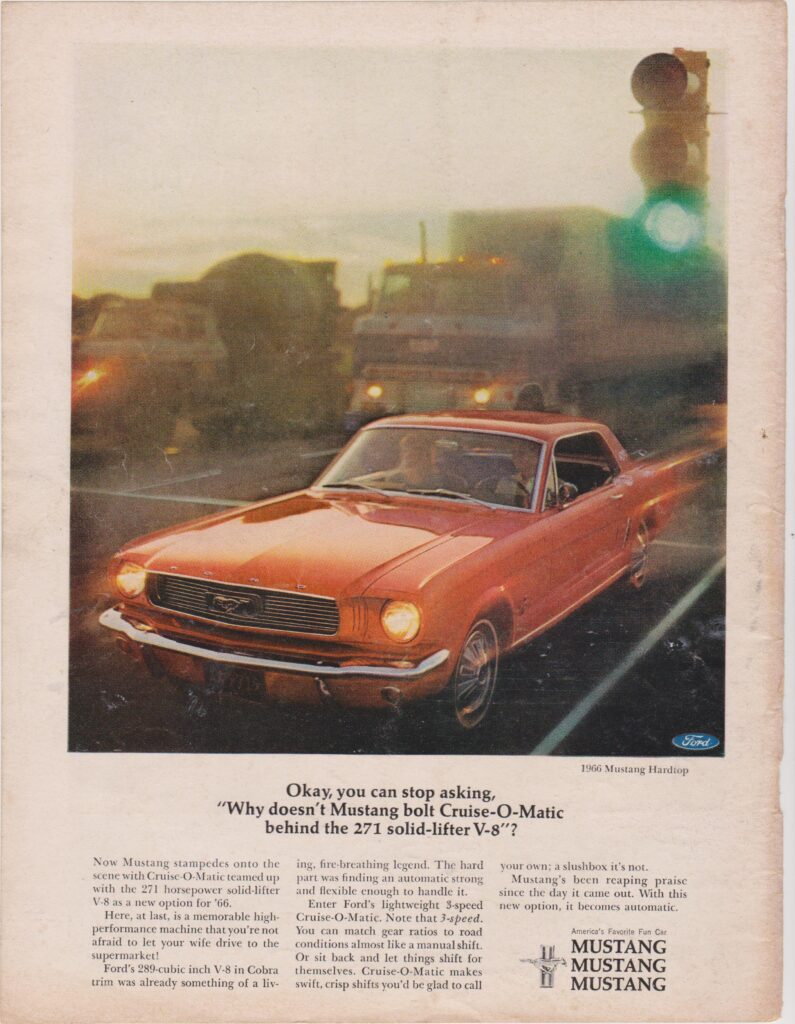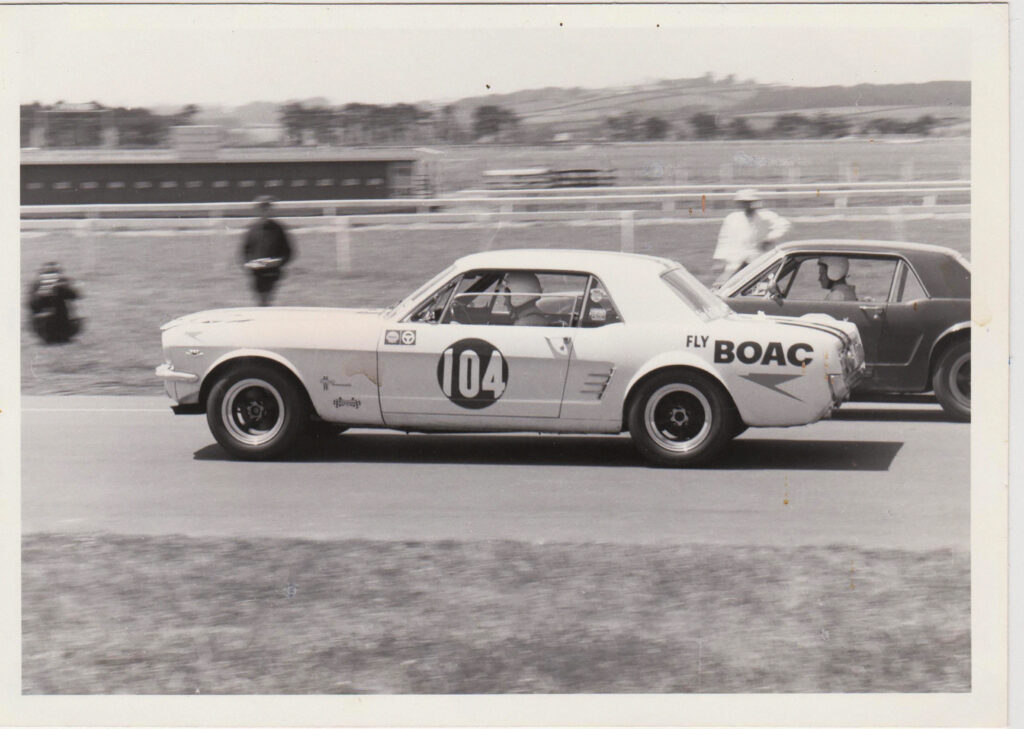In part one, our correspondent admitted the painful memory of attempting to build a hot sleeper Escort van had tainted his Ford memories. Here, in part two, his earlier, happier, memories redress the balance
By Gerard Richards
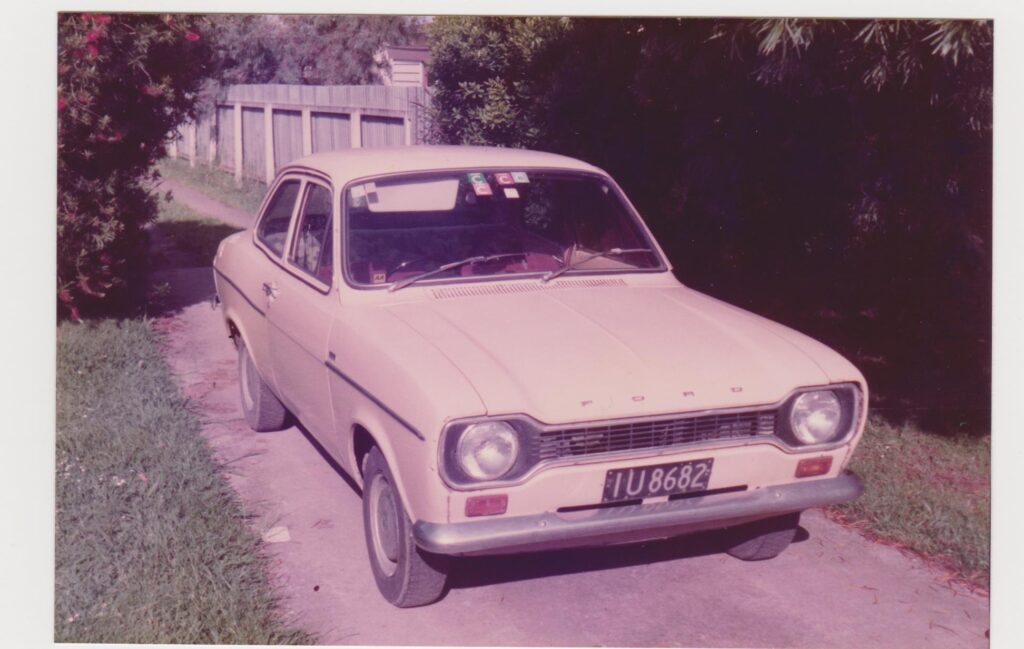
In part one of this Ford-flavoured trip down memory lane I recalled a sad and instructive episode when I learned my shortcomings as a car tuner, something that tainted my appreciation of Mk2 Ford Escort vans in particular. Prior to that I had a couple of other Ford entanglements of slightly more redeeming merit. There were two Mk1 Escorts I had got my hands on: a 1972 1300 XL belonging to my father and a later, end-of-line, English-assembled 1974 1100, which my partner and I bought from Panmure Motors Ford in Auckland in 1980. Both those cars were the high water mark of my relationship with the Ford Motor Co. I liked the Mk1 Escorts. They were nice, nippy, small cars, particularly the 1300, which handled really well, and had a very precise gearbox for the time.
Images of Jim Richards in the Carney Racing Williment-built Twin Cam Escort and Paul Fahey in the Alan Mann–built Escort FVA often loomed in my imagination when I was driving these Mk1 Escorts — not that I was under any illusion of comparable driving skills, but they had to be having just as much fun as I was steering the basic versions of these projectiles.
Jim Richards was a boyhood hero — my namesake but unfortunately no relation, although I did pass it off as more than wishful thinking with mates at times. The Carney Racing Escort Twin Cam was the car in which Jimmy really stamped his mark as a consummately talented racing ingénue.
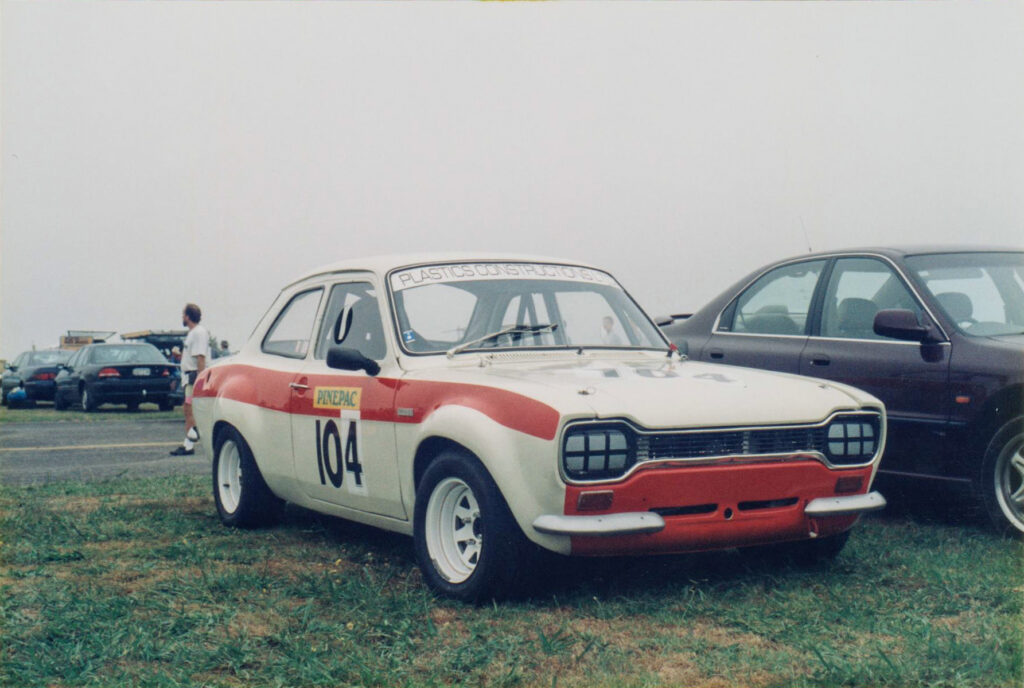
FORD ESCORT: GIANT KILLER
During the British 1969 motor racing season, Englishman Mike Crabtree won the national title with a Ford Escort, in its capacity class. Bought for my hero to race by his patron Jim Carney, the Twin Cam Esky allowed the young South Aucklander to show his class. He quickly became the benchmark all others measured themselves against in the 1969–70 local season. Only a late start to the season prevented him from surpassing rival Roger Anderson, who took the 1001–4200cc saloon car championship win with his BMW 2002.
Richards was the fastest in the category and often gave serious curry to those in the V8 heavyweight brigade as well. He frequently embarrassed some of the supposed stars, particularly on the tight tracks. Jimmy went on to claim that title in emphatic style the following year.
The other, early giant killer Escort on the local scene was of course Paul Fahey’s legendary Alan Mann–built Escort FVA. By then, Fahey had a reputation as a fighter who gave no quarter on the racetrack. When Fahey chose an Escort as his new mount, after three seasons behind the wheel of his super-successful ’66 Shelby Mustang, the faithful were gobsmacked. What could he have been thinking, they said. They soon found out — although it wasn’t a landslide in its first Kiwi debut season.
The fickle race fans quickly took the new combo to their hearts. From Fahey being the villain who held a stranglehold on the big V8 class in previous seasons, they changed camps in a New York moment and were suddenly rooting for the old campaigner. The cute little pocket-rocket Goliath slayer captured the imagination of punters — most of whom love an underdog — as it mauled the uncouth and lumbering V8s.
After some niggling/teething problems combined with flashes of brilliance in the ’69–’70 season, Fahey dealt out a severe lesson in domination in 1970–’71, with the Escort now with the 1860 FVC motor.
There were many other top Escort racers down the years, but those two were the standouts of the early era here. However, it would be a crime against a balanced view not to mention Don Halliday’s BDA-powered version. Halliday won the 1001–4200cc touring car title three years in a row, from 1972 to 1974, and Allan Woolf won it the following year in the same car.
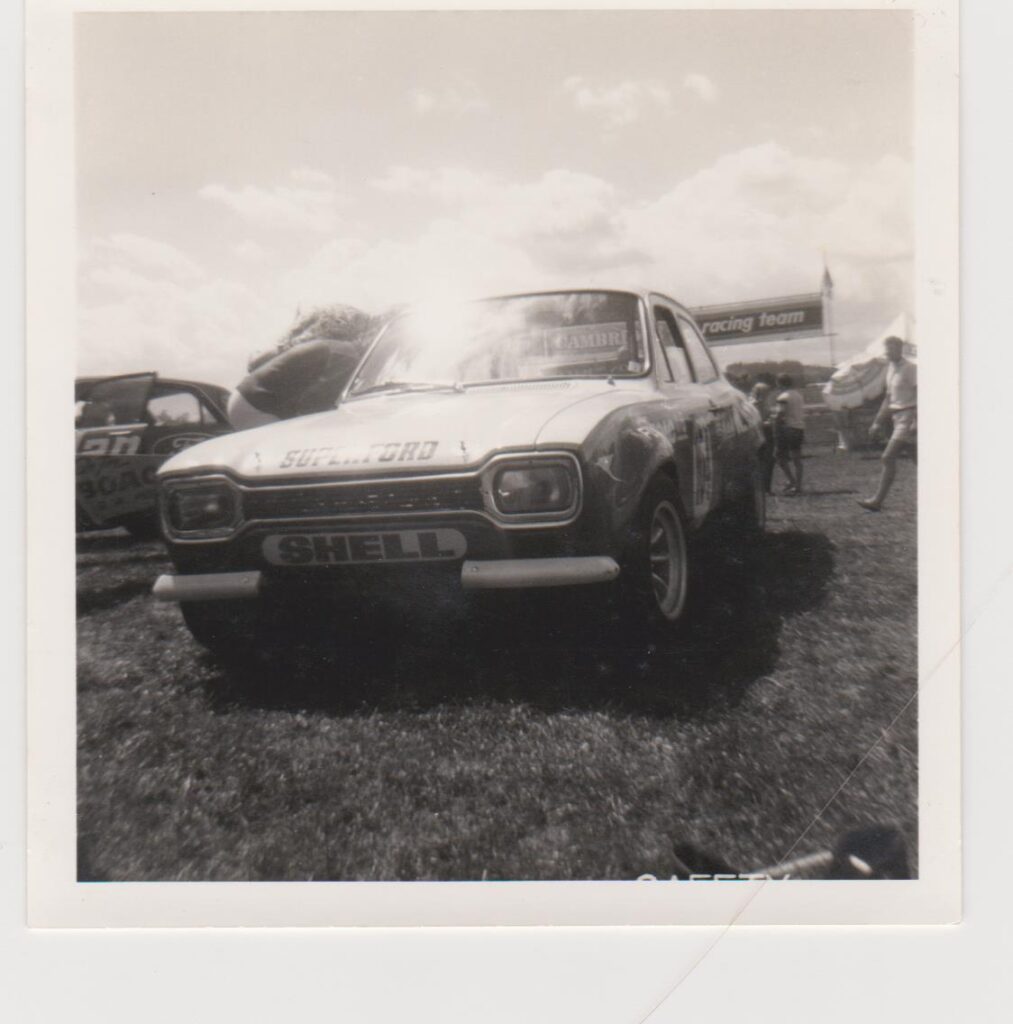
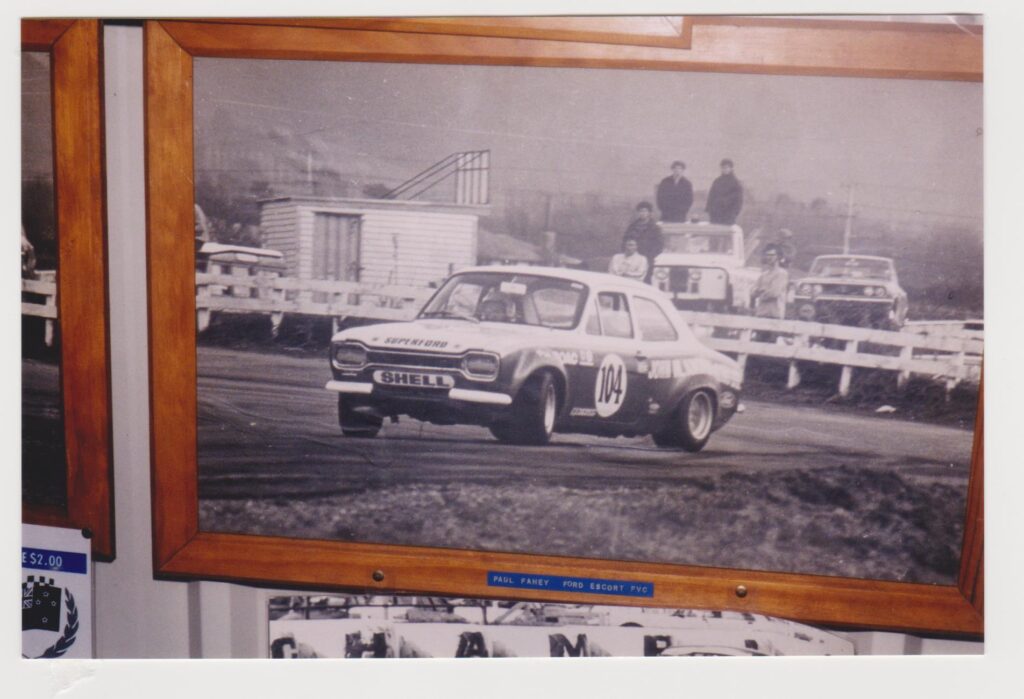
HOME-FRONT ESCORT ENCOUNTERS
As mentioned, close encounters with Escorts, particularly the two Mk1s, left a fuzzy warm spot lurking in my memory banks. Much less so the Mk2 — particularly tainted, of course, by the Cosworth van debacle. My dad also bought a new 1980 Mk2 Escort Ghia auto, which didn’t help the Mk2’s cause. With its 1300 motor and auto tranny, no amount of squinting through rose-tinteds would judge the performance spellbinding.
However, the old man’s previous 1972 teal 1300XL was a great little car, which I had the pleasure of driving on many occasions; not quite as quick as the other car in our garage, my mother’s 1971 Mini 1000 — over the first 100 metres the ‘brick’ had the advantage, then the Escort came into its own.
The enduring memory I have of Dad’s Escort took place late one wet Friday evening in 1976. My brother was driving down lower Cook Street in Auckland, not necessarily responsibly. At the bottom of the hill, he repeatedly wound on full lock and stamped on the brakes, to see how many 360s he could execute and try to break his record. That was one of the many intelligent antics in which these 20 and 17 year old testosterone-charged males engaged.
A high point of my experiences in the old man’s Escort was definitely not the moment in 1977 when I installed my girlfriend behind the wheel for a driving lesson at Clark’s Beach. All went well until she pulled in to park alongside her dad’s classic ’64 Mercedes sedan and misjudged, raking the front corner of the Escort along the length of the pristine Merc. A little unfairly, for some time after that I was not flavour of the month for any of the parties — moments like that call for more than Minties.
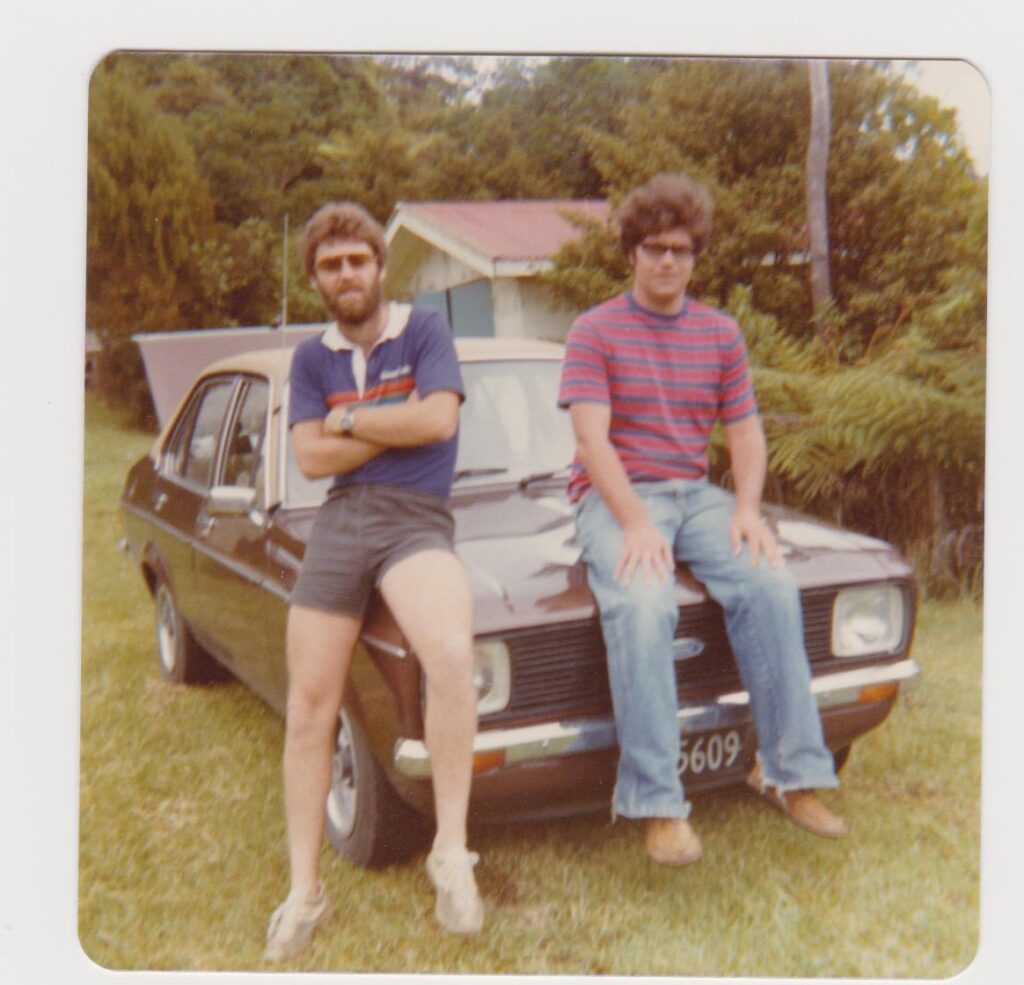
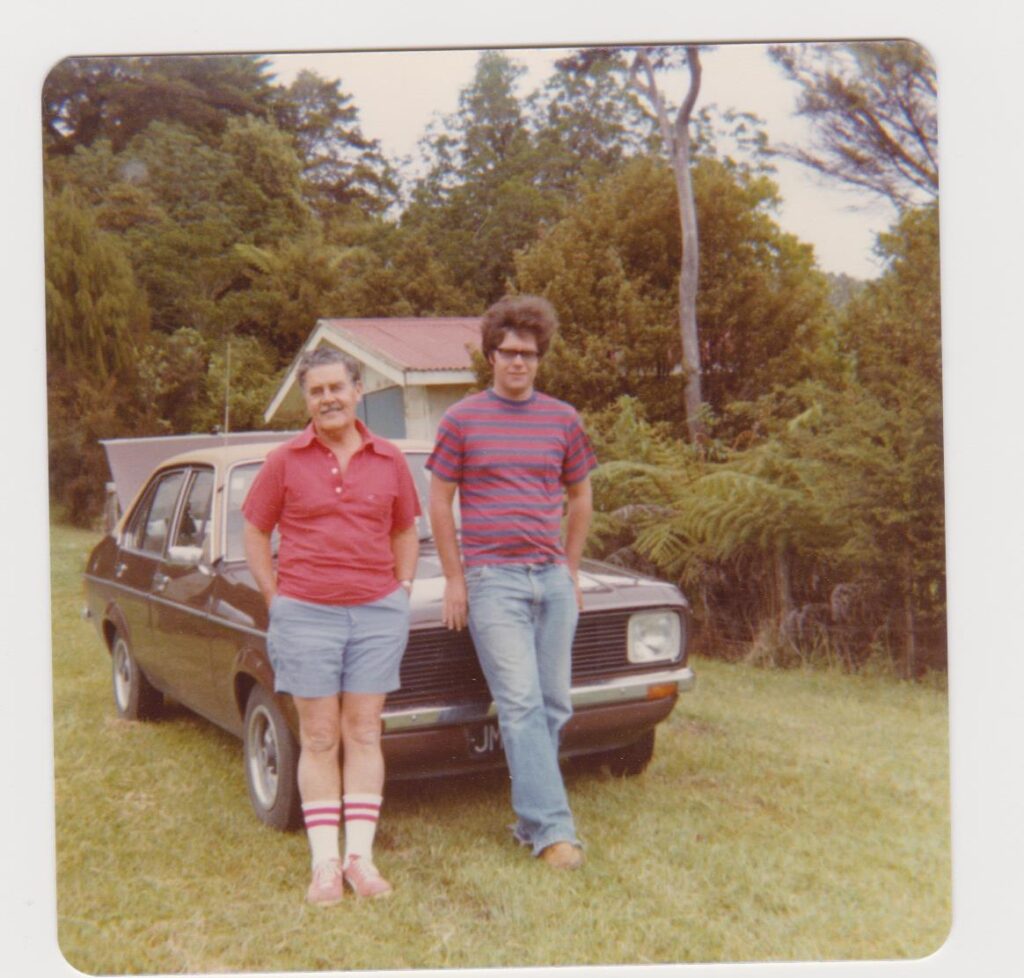
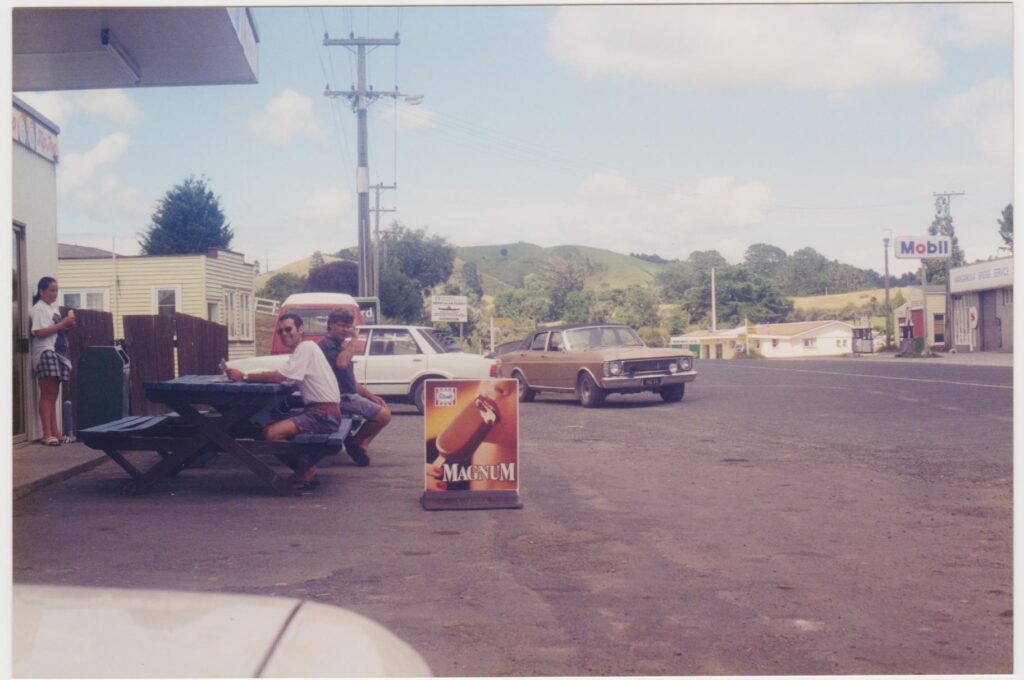
YA, ROAD TRIP
My partner’s 1974 Mk1 1100 Escort suddenly got called up for extra duty on an attempted South Island thrash in 1982. The 1965 Vauxhall Victor I was still persevering with was found wanting by the time we reached Hamilton, the rear suspension sagging under the weight of gear and making the top of the wheel arches rub on the tyres. This was apparently one step too far for the Victor, after its successful slog to the South Island the previous year. We staggered back home and transferred the gear to the Escort.
The Escort stepped up well and, apart from an exhaust muffler issue, performed faultlessly. This English-assembled car was a nicely appointed version, with cloth seats, etc. but it lacked the herbs of the 1300. We almost hit the wall figuratively while attempting a crossing of the Arthur’s Pass, a graphic illustration of the vehicle’s limited horsepower. On the upper reaches, in inclement weather, the car’s forward momentum diminished to a crawl. Down to first gear and pretty freaked out, we thought for a time it might be game over. It seems incredible now that a car could be so feeble but we eventually conquered the summit and wound our way down into Canterbury.
A year later, the Escort got flicked in favour of a one-year-old Datsun Sunny. Yes, we were turning Japanese — I really think so. The Escort was showing a number of signs of the dreaded metal worm breaking out and, while it continued to run well — considering its limited performance envelope — its insidious decrepitude was becoming more evident by the day. Perhaps that was a legacy of its early days on salt-covered English roads, as Escorts weren’t regarded as chronic rust buckets.
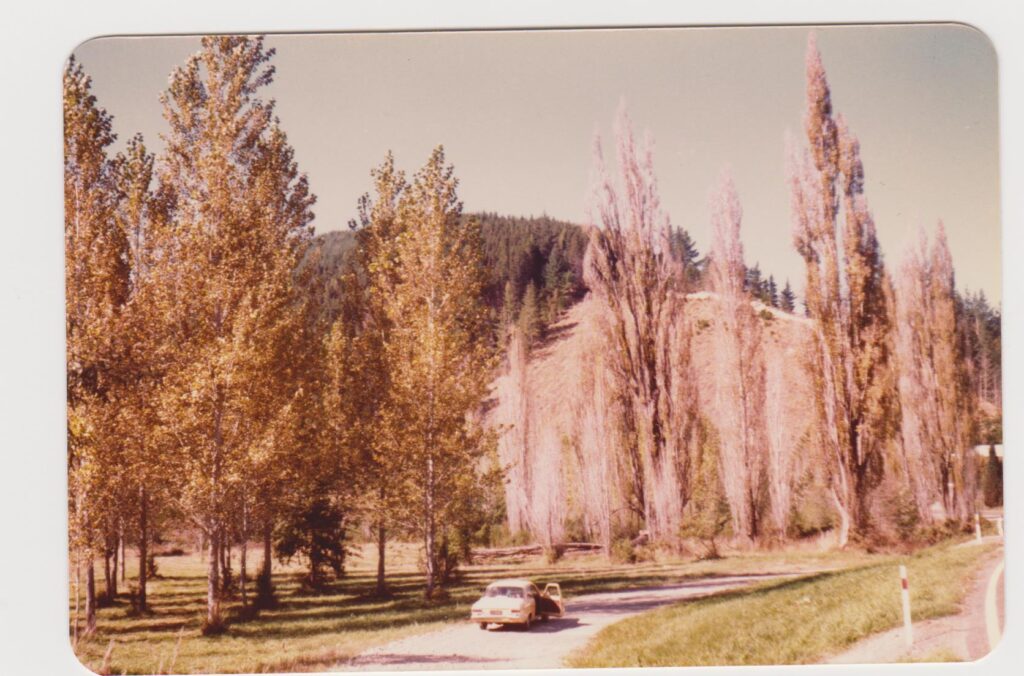
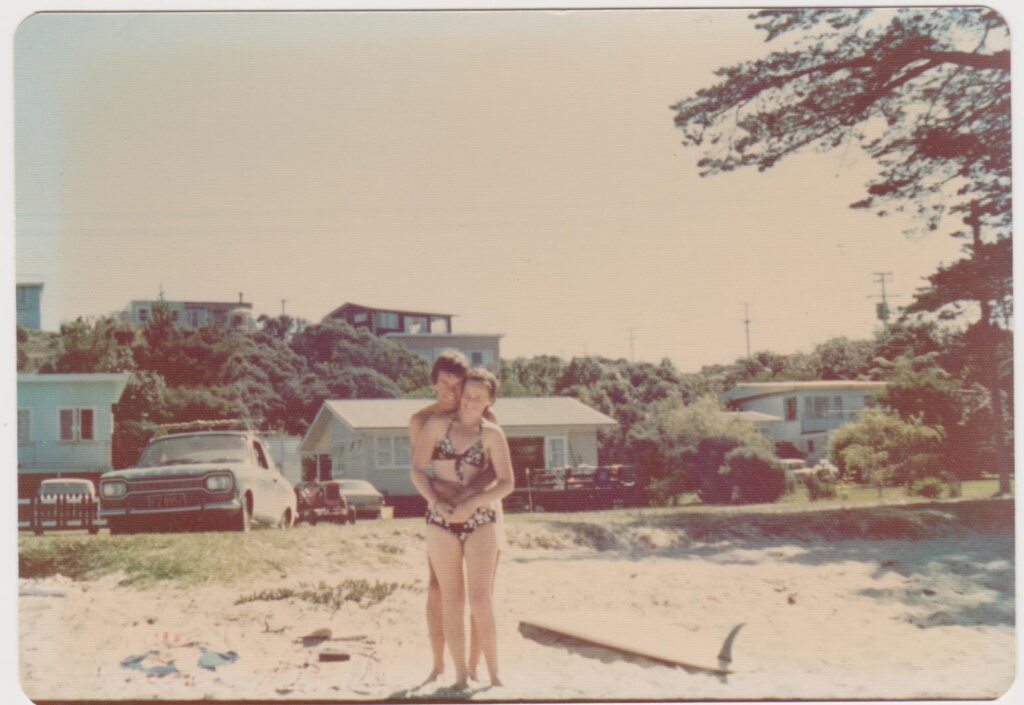
OTHER FORD FOLLIES
My final Ford engagement was a brief dalliance with a ’66 Ford Anglia, which I bought off a friend in the late ’80s. I had a vague idea of restoring it, but that quickly got too hard. It was only a 998cc version that puttered along at a very gentrified pace. It certainly didn’t incite any road warrior dreams! Following a valve grind with the help of my mate, I saw the error of my ways. Getting this car up to snuff was evidently going to be a mammoth task, mainly in the high-cost bodywork resto arena — undoubtedly well out of my league. I counted myself fortunate that a work-mate took it off my hands for what I had paid for it, for her husband to restore.
Apart from my dad’s third Ford — a new 1983 Mk4 Cortina 2000 auto — which I drove on many occasions, that was pretty much it for me and the blue oval. My mother had a new 1992 Ford Laser, which I drove occasionally. This was, of course, a Mazda 323 clone. The performance of the 1300cc engine was rendered totally underwhelming by the autobox. The Cortina, though, which Dad bought from Panmure Motors Ford, was OK but not exactly electrifying. It was kind of boring and a soft car, lacking inspiration. Possibly not surprisingly, its demise was the end of the road for the Cortina name. This final whimper was a world away from the launch of the cutting-edge and confidently styled Mk1, which won the European Car of the Year and of course spawned the fabulous Lotus Cortina.
However, the Mk4 did provide a desperate wild and wet episode in the backblocks north of Auckland one winter’s night. An excursion in the Cortina with Dad and my older bro to Mt Auckland, north of Helensville, began on a fine winter’s day in vintage fashion. Sim, my dad, ever the optimist, suggested driving up a rough track from the car park and down a long grass hill to the start of the walking track. Being the only sensible one aboard, I had my reservations but, against my better judgement, I went along with the plan. I was to deeply regret my failure to follow my intuition. It was a sunny day — when we set out. During the two-hour walk, heavy monsoon rain descended. By the time we returned to the car at dusk, the grass was as slippery as Donald Trump at a press conference. As daylight departed stage left, the desperate wheel spinning continued, gobbling up sacks wedged under the wheels, all in pouring rain and increasingly moody darkness. That was the script for an hour’s frantic shenanigans. The sacks and various imprecations were ultimately successful, but it was a gruelling episode that has become a favourite piece of family folklore. The old man shouted me a couple of beers after that one, in the Kaukapakapa pub!

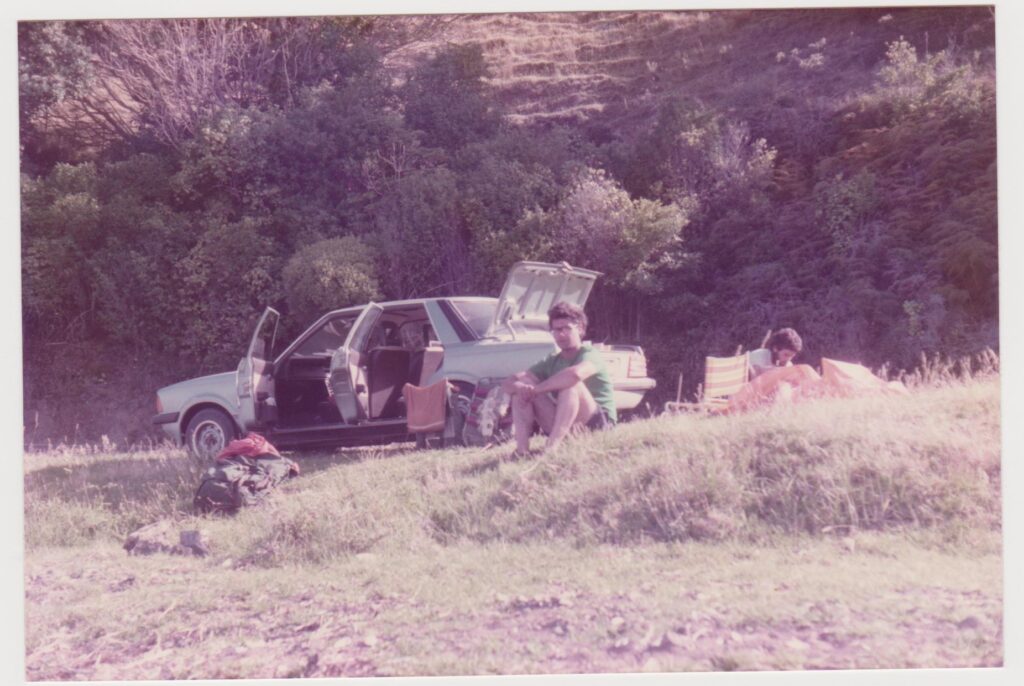
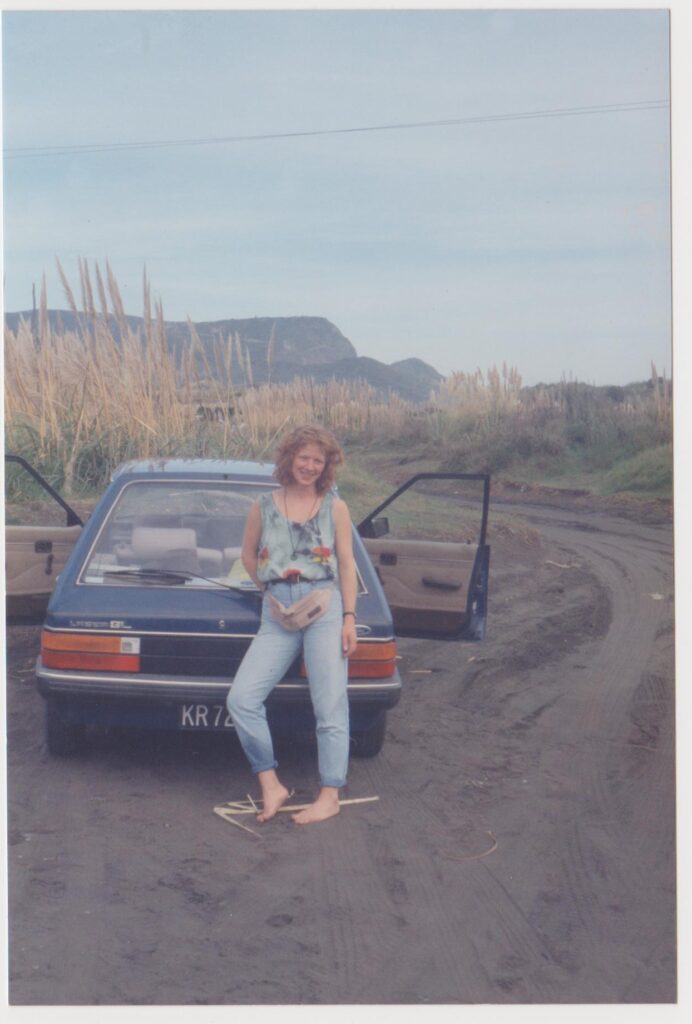
FORD: SOME HIGHLIGHTS
Of course, this saga is a personal odyssey among the Ford products it has been both my pleasure and my purgatory to endure. Other Ford groupies will have their own memories, pleasant or painful, of iconic models such as the Capri and Zephyr. Some readers, aghast at finding no mention of Aussie Falcons in this extended memoir, will consider this a form of literary fraud. I can hear the stalwart fans of the famous 30s flathead Ford V8 and ’49 to ’52 Spinner and Twin Spinner fraternity also crying foul. Those and others were groundbreaking cars and legends to be sure; they were just never in my frame.
So, looking back, the Mk1 Escort is top of my heap for locally assembled Ford products, closely followed by the Mk1 Cortina; maybe the Mk2 and Mk3 Zephyrs also get the nod — and not to mention the American-built Ford Mustang and its impact on the youth culture would be unforgivable.
From an engineering standpoint, the Mustang was nothing spectacular, with very humble underpinnings. The shape and image of the car were something else, though. It captured the imagination of the young, with its low muscular stance, reeking of aggression, power, and excitement. While the base models were unspectacular performers, the race shops, working with the bigger engine brethren, transformed the car. When the Mustang hit the racetracks, a legend was born.
The Mustang exploded onto the racetracks of New Zealand in the late ’60s, when I was a raw youth. The impact these cars made on our impressionable psyches was stunning. In particular, in the late ’60s and early ’70s, the early Shelby-built cars of Paul Fahey/John Riley and Red Dawson lit up the asphalt and blazed a trail of racing glory through our minds and hearts. Nothing was the same again.
Memories are a weird thing. Time softens the blow of torrid episodes and also amplifies the supposed golden periods of automotive fun. Revisiting them has been a poignant trip that, if nothing else, has given me a reality check I wasn’t expecting. Starting out, I thought Ford just didn’t dial my number but, digging back, I’ve somehow turned myself into a fan.

